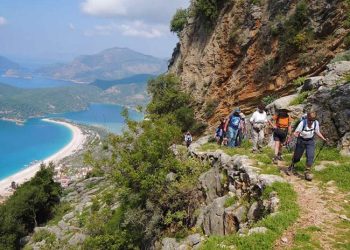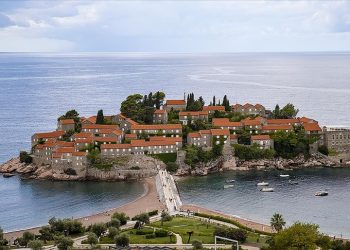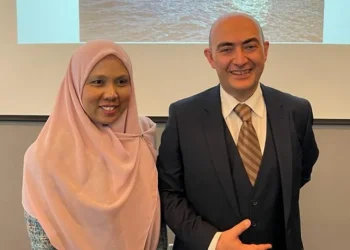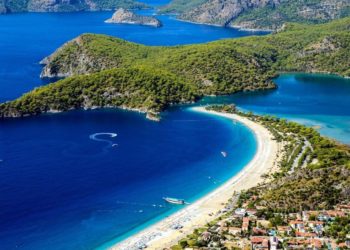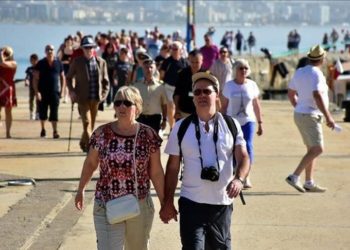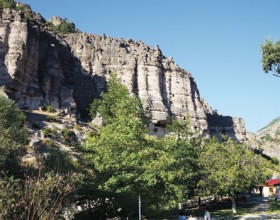 Seben, a district in the northwestern province of Bolu, is awaiting discovery by lovers of nature and history as well as investors as it is home to both natural and historic beauty which has so far gone unnoticed by many.
Seben, a district in the northwestern province of Bolu, is awaiting discovery by lovers of nature and history as well as investors as it is home to both natural and historic beauty which has so far gone unnoticed by many.
The district, only three hours away from İstanbul, has a population of 6,000 people. It is located near the Köroğlu and Aladağ mountains. It contains a man-made lake, Lake Seben, completed in 2010 and filled with melting runoff snow from the mountains. In addition to its lake, Seben has plateaus, historic caves and hot springs that make it an undiscovered haven for alternative tourism.
The district has a mild climate due to its location close to sea level. The district’s climate makes the production of various fruits and vegetables such as apples, nuts, peaches, tomatoes, corn and grapes possible. In some villages, such as Korucuk and Kızıl, villagers are involved in animal husbandry.
Seben District Governor Alper Balcı said the district’s 14 plateaus and lake await tourists and investors.
“We opened an almost 24-kilometer-long road around the lake. We expect guests to come here from İstanbul and Ankara for camping, mountain biking, trekking and weekend excursions,” he told Sunday’s Zaman.
There is ongoing work around the lake to prepare the area for tours and excursions in the fall.
Balcı said some businessmen want to invest in the city by constructing campsites for football teams and tourist facilities.
“We are trying to introduce the beauty of our district to Turkey and the world. We are calling on investors who have experience in mountain, plateau and winter tourism to discover the beauty of Seben,” said Balcı.
Metin Arıkoğlu, an investor who builds cabins in the district and runs a restaurant, said there are efforts to make Seben an alternative tourism resort for those tired of city life and in search of clean air, organic food and beautiful scenery.
Arıkoğlu said he has started work on six cabins in Seben because he thinks no sufficient investment has been made in the city to meet accommodation needs.
“The construction of these cabins is almost over. There are many secret valleys and canyons in the region where these cabins are located for those who want to go trekking and mountaineering,” he said.
There are also dozens of natural water resources in Seben; most of the city is covered with forests.
Just next to Lake Seben is the Aladağlar Scouting Camp. Officials from the Scouting Federation say they offer training in canoeing and rowing.
Cave houses also await discovery
One of the undiscovered assets of Seben is its cave houses, whose history dates back 1,000 years. The cave houses are three kilometers away from Bolu, the provincial capital, next to the village of Solaklar. They are four-storey structures that were constructed in soft caves. These caves, some of which are over 3,000 years old, dominate the valley.
Other cave houses near the villages of Muslar, Çeltikder and Yuva were constructed by Phrygians to protect against enemy attacks. The writing on the walls, in Greek, and signs of the cross show that the caves were used during Roman and Byzantine times.
District Governor Balcı said European tourists have paid visits to see these historical sites, but most Turkish tourists are unaware of the existence of Seben’s historical assets.
He said pathway and steel staircase projects to facilitate access to the cave houses have been completed.
Balcı also explained that the cave houses in Muslar and Solaklar had a strategic importance for the Ottoman Empire as he noted: “When Bayezid I was defeated by Timur in the Battle of Ankara, he hid his son, Mehmet Çelebi, in these caves. Timur sent his soldiers to capture Mehmet Çelebi, who repelled the soldiers of Timur thanks to the defense capability of the cave houses. These are places which worked in our favor in history.”
Balcı also added that renowned historian Halil İnalcık had conducted research in light of this information and confirmed that Seben has hosted several Anatolian civilizations.
“We call on everyone to reunite with history, the greenery, water and plateaus of Seben,” he said.
The city was a residential area during the era of the Hittites due to its agricultural fertility and abundance of rivers. Historical records also suggest that the Phrygians, who settled in Anatolia after they crossed the Dardanelles and the Bosporus, are among the first inhabitants of this region. The cave houses, known by locals as “homes of non-Muslims,” were built during the era of the Phrygians. The region was inhabited by the Romans and then the Byzantines after the Phrygians.







